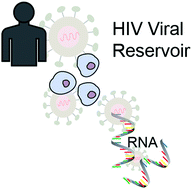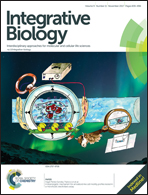RNA-mediated TILDA for improved cell capacity and enhanced detection of multiply-spliced HIV RNA†
Abstract
Quantification of the HIV viral reservoir is critical to understanding HIV latency, advancing patient care and ultimately achieving a cure. To quantify the reservoir, a new metric was recently introduced, which quantified cells carrying multiply spliced HIV RNA. The developed assay, Tat/rev Induced Limiting Dilution Assay (TILDA), enables quantification of cells containing multiply-spliced HIV RNA events as an indicator of reservoir size. Due to TILDA's reliance on a limiting dilution format paired with the rarity of target events, numerous individual reactions are required to obtain a single endpoint. The current assay embodiment uses a whole cell input to detect target RNA sequences without the traditional preceding nucleic acid purification steps. Thus, while the direct measurement of target events from whole cells significantly streamlines the workflow, there is a cost in sensitivity and assay throughput. Here, we apply a new technique for rapid RNA isolation, Exclusion-Based Sample Preparation, to TILDA, with the goal of alleviating these limitations without significantly adding to the workflow. By combining TILDA with multiplexed RNA extraction enabled by exclusion-based sample preparation, assay sensitivity and capacity are improved while maintaining assay simplicity, advancements that could facilitate eventual clinical implementation in detecting rare events in patients.



 Please wait while we load your content...
Please wait while we load your content...